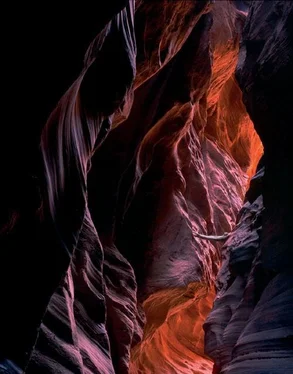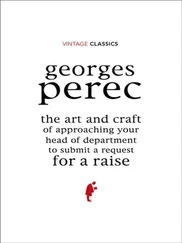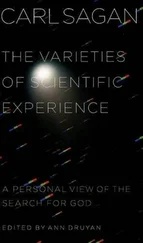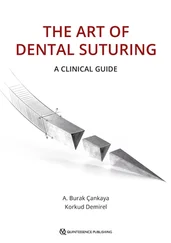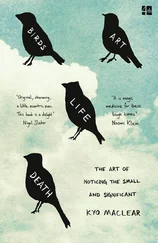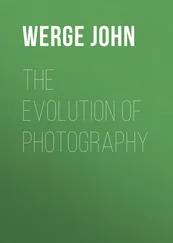Bruce Barnbaum - The Art of Photography - An Approach to Personal Expression
Здесь есть возможность читать онлайн «Bruce Barnbaum - The Art of Photography - An Approach to Personal Expression» весь текст электронной книги совершенно бесплатно (целиком полную версию без сокращений). В некоторых случаях можно слушать аудио, скачать через торрент в формате fb2 и присутствует краткое содержание. Жанр: Старинная литература, на английском языке. Описание произведения, (предисловие) а так же отзывы посетителей доступны на портале библиотеки ЛибКат.
- Название:The Art of Photography: An Approach to Personal Expression
- Автор:
- Жанр:
- Год:неизвестен
- ISBN:нет данных
- Рейтинг книги:5 / 5. Голосов: 1
-
Избранное:Добавить в избранное
- Отзывы:
-
Ваша оценка:
- 100
- 1
- 2
- 3
- 4
- 5
The Art of Photography: An Approach to Personal Expression: краткое содержание, описание и аннотация
Предлагаем к чтению аннотацию, описание, краткое содержание или предисловие (зависит от того, что написал сам автор книги «The Art of Photography: An Approach to Personal Expression»). Если вы не нашли необходимую информацию о книге — напишите в комментариях, мы постараемся отыскать её.
The Art of Photography: An Approach to Personal Expression — читать онлайн бесплатно полную книгу (весь текст) целиком
Ниже представлен текст книги, разбитый по страницам. Система сохранения места последней прочитанной страницы, позволяет с удобством читать онлайн бесплатно книгу «The Art of Photography: An Approach to Personal Expression», без необходимости каждый раз заново искать на чём Вы остановились. Поставьте закладку, и сможете в любой момент перейти на страницу, на которой закончили чтение.
Интервал:
Закладка:
In 1978, I began photographing a fascinating set of narrow, winding sandstone canyons in northern Arizona and southern Utah, the slit canyons, and my lifelong interest and educational background in mathematics and physics has greatly colored my interpretation of them. I view their sweeping curves as those of galaxies and other celestial bodies in the process of formation. The lines and the interactions of forms strike me as visual representations of gravitational and electromagnetic lines of force that pull the dust and gases of space together to form planets, stars, and entire galaxies, or the subatomic forces that hold atoms and nuclei together. To me, a walk through those canyons is a walk through billions of years of evolving space-time, and I have tried to convey that vision through my photographs (Figure 1-5).
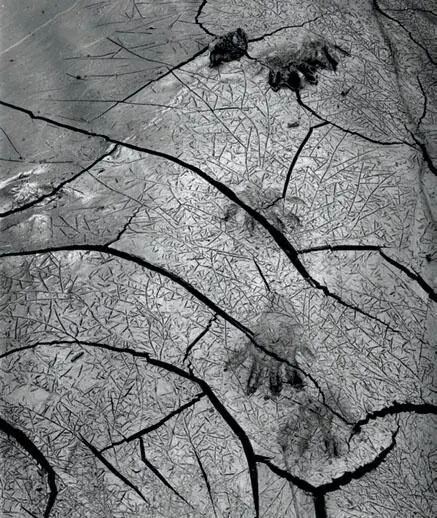
The cracked mud of a drying streambed held the paw prints of a raccoon, the first sign of life I saw in the burned landscape, bringing tears to my eyes. It was a joyous indication that some of the local residents had survived the fire.
Figure 1-4. Raccoon Tracks
Over time, I recognized that many of the same facets of nature that intrigue me are also present in architecture. Architecture can be awesome and uplifting; it can supply fascinating abstractions and marvelous lines and patterns. It often can be photographed without the need for supplementary lighting, and in that respect it is much like nature and landscape photography. Turning my attention to manmade structures was an inevitable expansion of my interests.
After ten years of commissions in commercial architectural photography, my first major effort at architectural subjects for my own interpretation came in 1980 and 1981: the cathedrals of England. Prior to my first cathedral encounter, I would have had an aversion to photographing religious structures; it’s just not my bag. But upon seeing them for the first time, I was awestruck by their grandeur. My deep love of classical music crystallized my interpretation of their architectural forms as music—as harmonies and counterpoints, rhythms and melodies—captured in stone. I also saw the architecture in mathematical terms, as allegories on infinity, where nearby columns and vaults framed distant ones, which in turn framed still more distant ones in a seemingly endless array. I altered my flexible itinerary to see as many cathedrals as I could during my two-week visit, then returned in 1981 for five more weeks of exploring, photographing, and exulting in these magnificent monuments of civilization (Figure 1-6).
As time went by, my interest in architecture—specifically, in large commercial buildings—led to a continuing study of downtown areas in major cities. This series, too, draws on my mathematical background, for I am drawn to the geometrical relationships among the buildings and the confusion of space caused by the visual interactions of several buildings at once. I find this aspect of my urban studies appealing (Figure 1-7).
But my response to modern urban structures has another side, too. Unlike my positive reaction to cathedral architecture, I dislike the architecture of all but a very few commercial buildings. They are cold, austere, impersonal, and basically ugly. I feel that these giant downtown filing cabinets are built for function with little thought given to aesthetics. To me, they are the corporate world’s strongest statement of its disinterest in humanity and its outright contempt of nature. I have attempted to convey those feelings through my compositions of their stark geometries.
Over the years, my work has grown increasingly abstract. It has become bolder and more subtle at the same time: bolder in form, more subtle in technique. My subject matter will likely expand in the future; I will look further into those subjects that I looked at in the past, bringing out new insights that I missed the first time. Such growth and change is necessary for any artist, or stagnation and artistic senility set in.

I see the gracefully sweeping lines of the slit canyons as metaphors of cosmic forces made visible, as if we could see gravitational or electromagnetic lines of force. If we could see those forces between heavenly bodies (stars, galaxies, planets, etc.), rather than seeing the heavenly bodies themselves, they may well look like this. I feel that this photograph contains particularly elegant and enigmatic examples of this effect, with sculptured lines so lyrical that it would make a Michelangelo or Henry Moore jealous with envy.
Figure 1-5. Hollows and Points, Peach Canyon

A series of compound columns, arches, and vaults frame the distant portions of the cathedral, with still more arches and columns, indicating even more around the bend. Indeed there are more. The unity of forms amidst the complexity of the architecture is a vivid example of Goethe’s statement that, “Architecture is frozen music”. This is also an example of positive/negative space in which the nearby columns and archways form the positive space, and the distant nave the negative space.
Figure 1-6. Nave From North Choir Aisle, Ely Cathedral

Seven different modern skyscrapers huddle together in downtown Chicago, creating interesting interactions within the geometric sterility of each. Somehow these giant urban file cabinets can become visually interesting when viewed in relation to one another.
Figure 1-7. Chicago, 1986
I have come to recognize a very surprising fact: subject matter ultimately becomes secondary to the artist’s seeing, vision, and overall philosophy of life and of photography. There is a one-to-one equality between the artist and his art. A photographer’s way of seeing is a reflection of his entire life’s attitude, no matter what the subject matter may be. Only Edward Weston could have made Edward Weston’s photographs; only W. Eugene Smith could have made W. Eugene Smith’s photographs; etc. This is true because each great photographer has a unique way of seeing that is consistent throughout the artist’s entire body of work.
It would be of value to you as a serious photographer to delve into the question of why your interests lie where they do, and why they may be changing. Such evaluation is part of getting to know yourself better and understanding your interests more fully. It’s part of successful communication. Start with your areas of highest interest and stick with them. Don’t worry about being too narrow or about expanding. You will expand to other areas when you are compelled internally to do so—when something inside you forces you to make a particular photograph that is so very different from all your others.
Judging Your Own Personal Response
The second of the two personal considerations is more difficult. How do you respond to your interests and how do you wish to convey your thoughts photographically? This is a more deeply personal question than “What interests you?” It requires not only knowing what interests you, but also just how it affects you.
In the examples of my own work just discussed, I attempted to express a bit of this second consideration. The slit canyons interested me in a very specific way—as cosmic analogies, or as analogies to force fields—and my imagery is based on conveying that impression to others. Similarly, the cathedrals struck me as grand, musical, and infinite in their marvelous forms. Again, I tried to emphasize those qualities in my imagery. I did not simply conclude, “These things are interesting!” and begin to shoot, but rather I responded to the specific ways that I found them to be interesting. I approached them in an effort to express my strongest feelings about them photographically.
Читать дальшеИнтервал:
Закладка:
Похожие книги на «The Art of Photography: An Approach to Personal Expression»
Представляем Вашему вниманию похожие книги на «The Art of Photography: An Approach to Personal Expression» списком для выбора. Мы отобрали схожую по названию и смыслу литературу в надежде предоставить читателям больше вариантов отыскать новые, интересные, ещё непрочитанные произведения.
Обсуждение, отзывы о книге «The Art of Photography: An Approach to Personal Expression» и просто собственные мнения читателей. Оставьте ваши комментарии, напишите, что Вы думаете о произведении, его смысле или главных героях. Укажите что конкретно понравилось, а что нет, и почему Вы так считаете.
